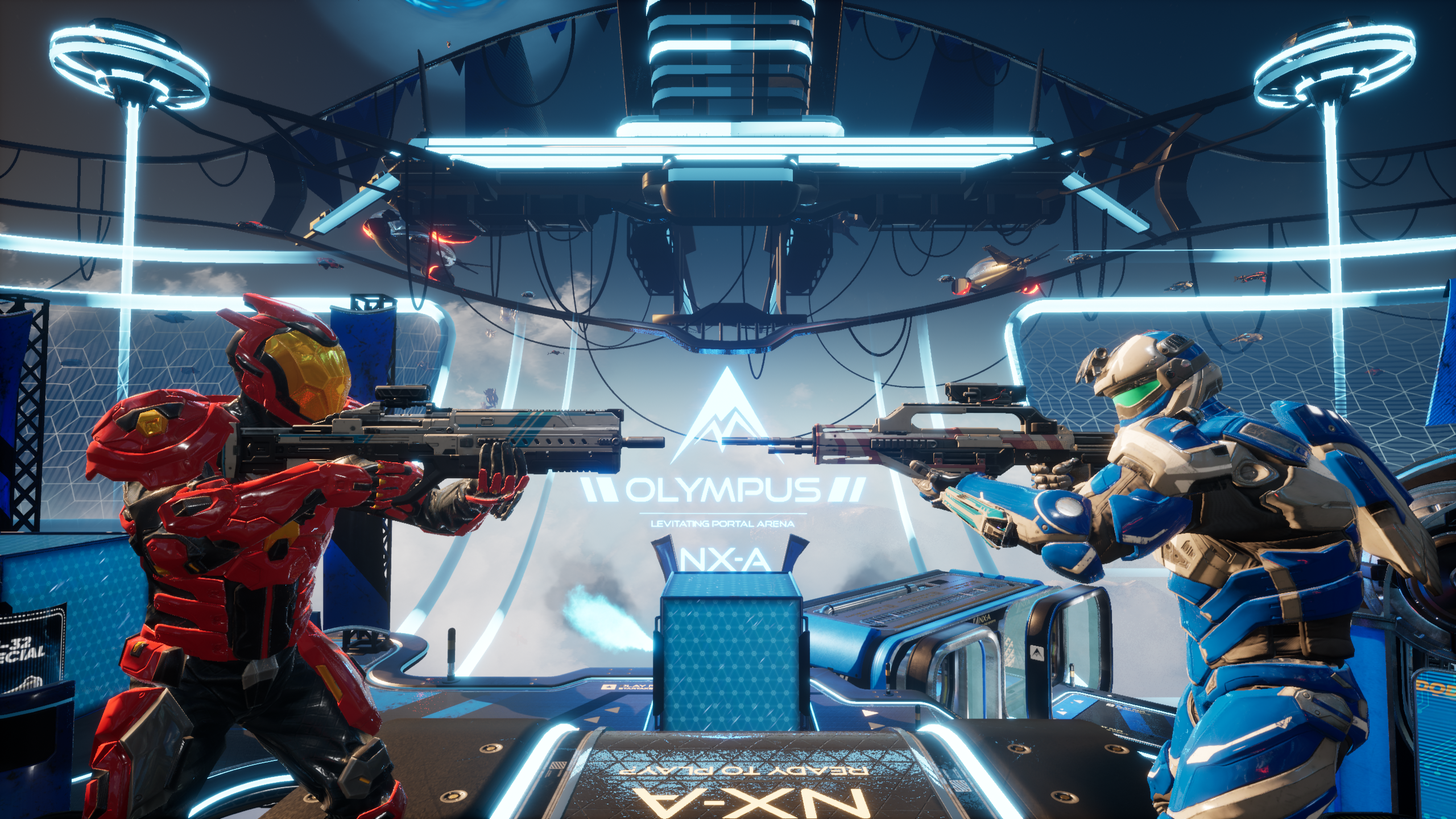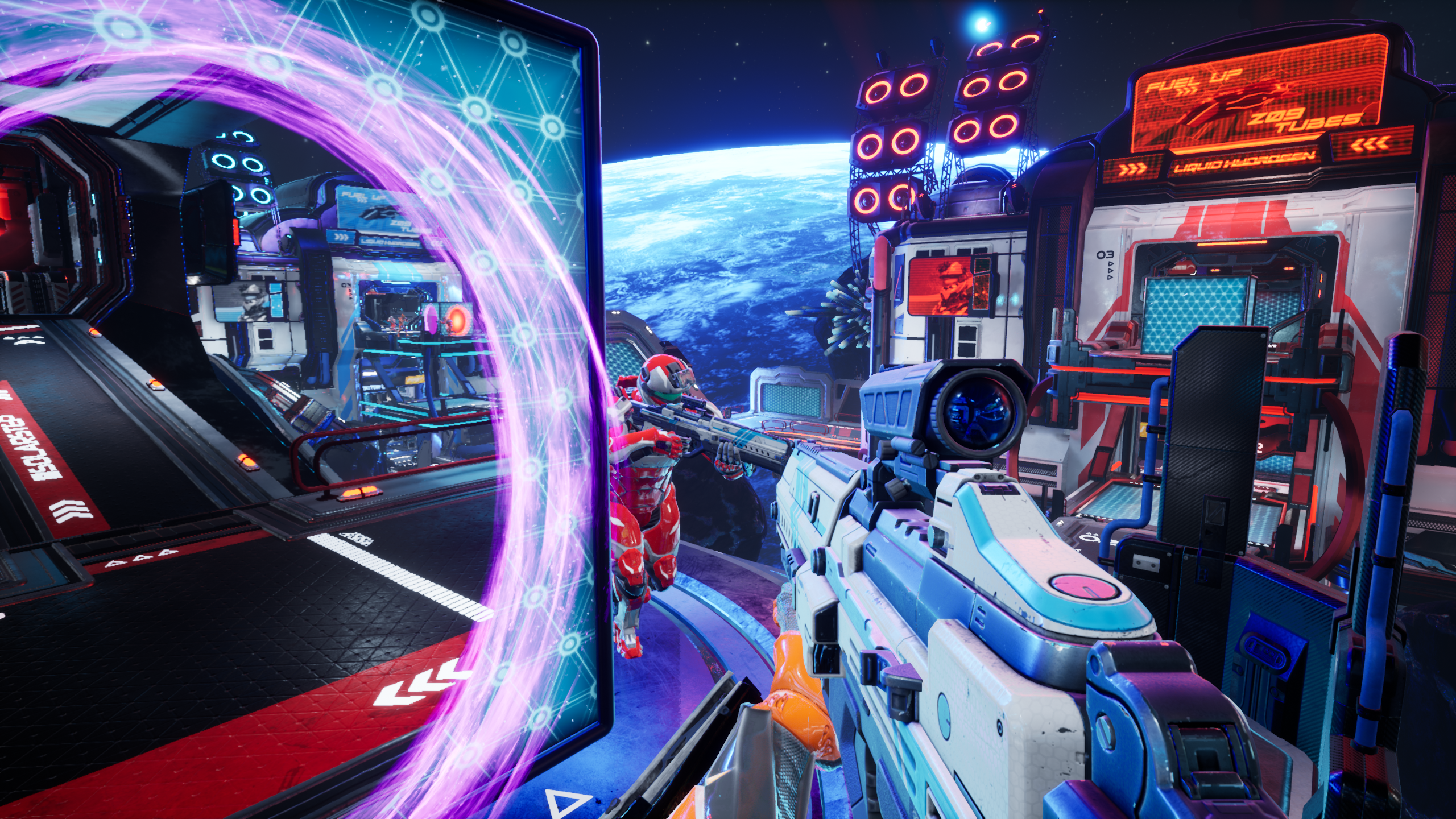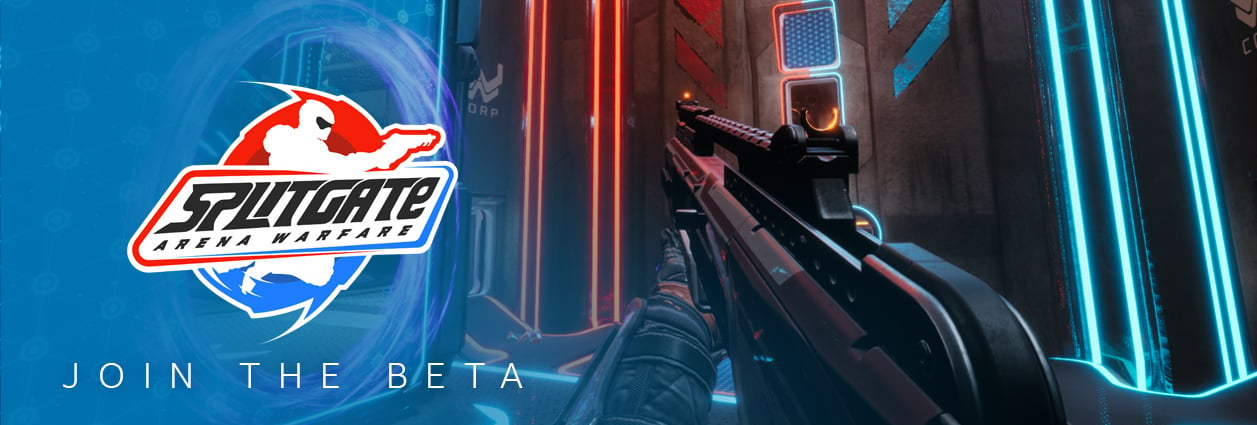Splitgate: Arena Warfare Does the Unthinkable by Adding Portals to an FPS
Staff – April 9, 2019 at 2:20 AM
Splitgate: Arena Warfare will be hosting a public beta between 12:00pm PT on April 11 and 11:59pm PT on April 14. But just what exactly is Splitgate: Arena Warfare, and what does the gameplay look like?
Picture this: You’re playing a typical FPS. It’s a free-for-all death match, so you’re lurking across the map cautiously, ears open for any sign of gunfire or enemy footsteps. Even a missing weapon pickup can be evidence that an enemy was here recently, so you’re on your toes. You come around a corner when suddenly an enemy appears on the other end of the hallway.

You do what any seasoned FPS player would do: You engage. You both open fire upon each other, ducking behind corners to evade fire and reload when necessary. Suddenly, your opponent disappears through a wall to their left by walking directly into it. Before you can react, you are shot in the back. You die, though not before whipping around to see what actually happened: Your opponent opened a portal in the wall behind you. They weren’t traveling through a wall at the end of the hallway — they were traveling through a portal.
Or maybe it happens this way: Your opponent opens a portal in the wall next to them, then opens a corresponding one on the ceiling above you. They eliminate you by raining gunshots upon you from the opening in the ceiling by firing into the portal on the wall.
Or maybe your opponent planned ahead before your encounter, placing a portal on a wall overlooking an abyss in another area of the map. When they see you, they simply open a portal beneath your feet, sending you right through and out of the level’s bounds.
All of these scenarios and many others are viable in 1047 Games’ Splitgate: Arena Warfare, an upcoming FPS that utilizes portal-based traversal mechanics to add a whole new dimension of strategy and technical skill to the genre.

1047 Games was founded by Ian Proulx and Nicholas Bagamian in a former frat house-turned-dorm at Stanford University while they were studying computer science. (1047, in fact, is the address of their dorm.) They started organizing a small group of students to meet up weekly and learn how to develop games in the Unreal Engine together.
“Let's just — no expectation, no commitment — meet twice a week and have fun with it,” Proulx said of their attitude at the time. “Maybe it turns into something, maybe it doesn't.” However, as they continued to experiment with game development, Proulx and Bagamian realized that their idea of introducing portal mechanics to an FPS was a potent one, and they decided to bring it to fruition.
Today’s Splitgate is a robust FPS game whose portal mechanics aren’t merely a gimmick. The game’s uses of portals can be revelatory: Players can set traps, propel themselves across the map, or even chase after elusive targets using the physics-based portal mechanics. Even guns can be transported through portals. For example, if you see your opponent heading for a shotgun, you can shoot a portal underneath it to ensure it’s just out of their reach before delivering the final blow.
Otherwise, many of the other mechanics of the game are fairly familiar to FPS players. The game features a standard range of weapons (snipers, shotguns, battle rifles, etc.), and health regenerates after evading damage for a set period of time. “Our philosophy is to keep everything else as simple as possible because there is so much depth and complexity to the portal mechanic itself,” Proulx explained.
The best competitive games, after all, are ones that are capable of showcasing exceptional talent, games that allow players to make near superhuman plays using the limited tools they’ve been given. Proulx predicts that many players will easily pick up on how to use portals to flank, but will eventually learn how to perform fake-outs, use the game’s physics to their advantage, and eventually, predict their opponents’ behavior.
1047 Games implemented other thoughtful features that allow the game to run smoothly while still retaining strategic depth. For instance, all players are equipped with a jetpack, but it’s merely used to help soften falls and portal jumps rather than grant players the ability to fly on a whim.
Another clever feature is that your opponent’s portals appear opaque to you, though you can still travel through them. This might make someone think twice before giving chase to an enemy with low health who disappears through a portal. Their entire team may be waiting on the other side, ready to ambush.
Splitgate also encourages creativity through its map design. Only certain surfaces can hold portals, so the varied, judicious placement of portal walls across maps creates a wide range of potential scenarios.
“One of the best pieces of advice that I received early on came from a level designer that had been in the industry for a while,” Proulx said. “He told me that, as a designer, you want to have variety in every map. Open areas, tiny rooms, narrow corridors — just a lot of variety where you're not just seeing the same interaction every time.”
Splitgate’s maps also demand that the player use its physics mechanics to reach special areas. For instance, one map has a sniper’s nest that appears out of reach via platforming or using your jetpack. However, if you spawn a portal on a wall facing the tower and a portal dozens of feet below you, you can simply jump into the portal below, building up enough speed by free-falling to shoot yourself through the other portal and onto the tower.

Splitgate has loads of potential, hinting at a whole new subgenre of FPS. It’s exciting to imagine the highlight-reel possibilities that await when it’s officially released.

